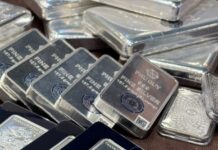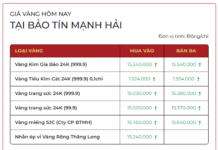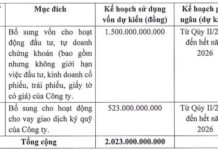
A little-known metal called antimony has surged 300% this year, outpacing gold, silver, and even Bitcoin. This critical metal, used in military applications and high-tech industries, has seen its price skyrocket due to a combination of global events and strategic decisions by major powers.
Specifically, antimony’s price has soared from $11,000 per ton to over $40,000 per ton, with expectations of reaching $50,000 per ton by 2025. This dramatic increase is largely due to China’s decision to cut off its supply to the US this summer, creating a scramble for alternative sources.
Western governments have responded swiftly, pouring billions of dollars into securing antimony supplies. This race for resources has sent stocks of companies with significant antimony assets soaring. For instance, Larvotto in Australia, which boasts the country’s largest antimony mine and the “golden” Hillgrove project, has seen its stock surge nearly 600% since the start of 2024.
Now, a new player, Military Metals Corp, is poised to become the next big winner in this arena. With the acquisition of two of the world’s top ten antimony projects, Military Metals is rapidly bringing a new antimony mine online. One of their most significant purchases is the Trojarova project in Slovakia, a Cold War-era mine estimated to contain nearly 70,000 tons of antimony, worth approximately $2 billion at current prices.
The importance of antimony in the post-Cold War era cannot be overstated, especially with the recent geopolitical tensions and NATO countries spending billions to replenish their depleted weapons stockpiles. This has led to a peak in demand for antimony, which is crucial for military applications such as intercontinental missiles, artillery shells, bullets, and armored vehicles.
Military Metals is not putting all its eggs in one basket, though. They are also making moves in North America, specifically in Canada’s renowned antimony mine in Nova Scotia, West Gore.
With a current valuation of just $12 million, Military Metals is a hidden gem. Their new operations in Slovakia alone are valued at $2 billion in ore at today’s antimony prices, not to mention the potential of the West Gore mine in Canada. As the world scrambles to secure this vital metal, Military Metals is well-positioned to become a major player in the industry.
As of September 15, China has tightened its control over the purchase, sale, and export of antimony and products containing this element. China holds 32% of the world’s antimony reserves and produces 48% of the global supply, far surpassing the second-largest producer, Tajikistan, at 25%.
Antimony, a metalloid element with both metallic and non-metallic properties, has long been used by humans for various purposes, including medicine and cosmetics. Today, antimony and its compounds are primarily used as flame retardants, accounting for about half of the global consumption of antimony in 2023. It is also used in the production of photovoltaic glass to enhance the efficiency of solar panels and in the manufacturing of batteries.
Antimony plays a critical role in military applications, including night-vision goggles, armor-piercing bullets, infrared missiles, and even nuclear weapons.




































